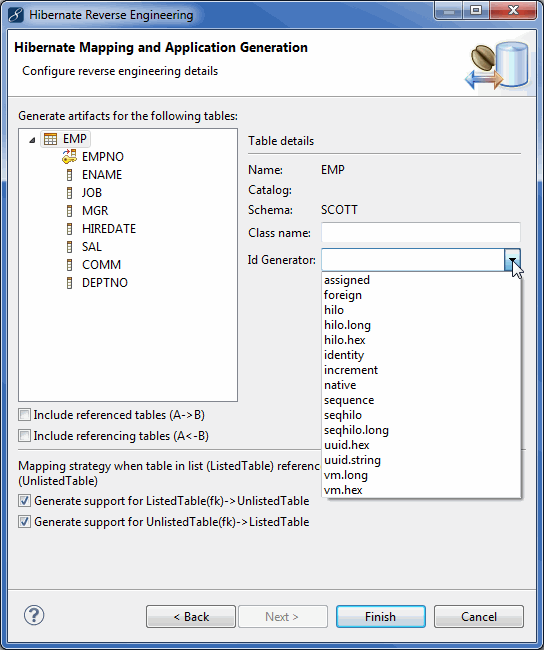Roads & PavementRoads & Pavement
Barefoot
Minimal
Low
Medium
High
Maximal
All around running shoes offer comfort and cushioning for daily runs, jogs, walks, and long mileage. They offer enough versatility for both faster and slower runs and are a great option for those who want one running shoe to do it all.
Fast run or uptempo running shoes are lightweight and responsive. They offer streamlined designs that have minimal uppers and offer a high level of energy return. These shoes are a great option for faster runs in the week or those looking for a livelier experience.
Max Cushion shoes offer premium cushioning with ample ground protection and a stable ride. These types of shoes provide abundant impact protection that softens landings while running at any pace or distance. These types of shoes are best for slower recovery runs and easy days where comfort takes priority.
Racing shoes are designed with optimal performance in mind. These types of shoes have snug-fitting uppers, energetic midsole foams, and features implemented for maximum efficiency. These types of shoes are best for runners looking to gain the ultimate advantage in races but may sacrifice some durability and comfort.
Gym Workout shoes offer a stable and versatile ride. They have a firmer underfoot feeling that provides stability for lateral movements with comfortable uppers. These types of shoes are best for trips to the gyms, cross training, casual wear, and light running. Thorben Janssen on LinkedIn Sequence naming strategies in Hibernate 6
Road running shoes feature smooth outsoles that are designed for running on paved surfaces such as roads, sidewalks, and bike paths.
Designed to handle most trail runs, these shoes prioritize comfort and a smooth ride. These shoes are great for anything from smooth singletrack, park trails, and fireroads making them ideal for those who run from their doorstep on streets before hitting the trail.
These shoes are best used for hard, rugged trails such as shale, granite or sandstone where grip on smooth surfaces and underfoot protection are important.
Designed for use in muddy, soggy conditions, these shoes feature very aggressive outsoles that dig deep into soft ground for exceptional traction.
These shoes feature technical outsoles designed to grip snowy and icy trails making them ideal for winter trail running.
Cushioning level, or stack height, refers to how much shoe is between your foot and the ground. For this category, we reference the amount of cushioning below the forefoot as the heel height will be equal to or greater than the forefoot height.
Chapter 4. Mapping persistent classes Java Persistence with
0-13mm. The Shoe generally does not have a midsole and feels like there is no cushioning. This shoe is all about feeling the ground underfoot.
14-18mm. The shoe has a thin midsole that allows for a natural running experience. Racing shoes and minimalist shoes are common here. These shoes offer a feeling of being connected to the road or trail.
19-23mm. The shoe has a slightly cushioned feel and may feature added cushioning technologies. Performance training shoes and some trail shoes are common here. These offer protection during footstrike but prioritize a lightweight, grounded experience.
24-28mm. These shoes have a stack height that fall near the middle of the spectrum.The shoes in this category are verstaile and great for all types of runs and distances.
29-34mm. The shoe has a thick midsole and ample cushioning. These shoes are highly protective and absorb more impact than the body.
35mm plus. The shoe has an extremely thick midsole and extra cushioning. The focus is on protection and soft foam underfoot with hardly any ground feel.
Neutral shoes support the foot through a normal range of arch collapse and generally do not have a built-in technology to correct movement.
Stability shoes are a great option for those who overpronate or need added support. These shoes help to limit the inward rolling motion of the ankle while running or walking and assist in guiding the foot straight through the gait cycle. Developing Persistence with Hibernate Genuitec
Product Details:
Implementing a Custom ID generator for Hibernate entities in Java shop, Hibernate Tutorial Generate O R Mappings shop, java Sequence generator by entity in JPA Stack Overflow shop, Spring Hibernate Integration Example Tutorial Spring 4 shop, Inheritance and custom types Hibernate shop, HIBERNATE ID GENERATION STRATEGIES by Sybren Boland Medium shop, Chapter 8. Advanced entity association mappings Java Persistence shop, Hibernate Tutorial Table per Hierarchy Example using XML file shop, Four Primary Key Generation Strategies in JPA AUTO IDENTITY shop, Best Possible Hibernate Configuration for Batch Inserts DEV shop, Spring Hibernate Configuration and Create a Table in Database shop, 110 Hibernate Interview Questions and Answers Bluebird International shop, Hibernate Quick Guide shop, JPA Hibernate Sequence generator generating odd ID value and shop, Hibernate 5 2 generatedvalue strategy generationtype shop, Hibernate Inheritance Strategies TopJavaTutorial shop, An Introduction to Hibernate 6 shop, JPA and Hibernate Performance Tips PPT shop, Hibernate The Silver Bullet Toptal shop, Developing Persistence with Hibernate Genuitec shop, Chapter 4. Mapping persistent classes Java Persistence with shop, Thorben Janssen on LinkedIn Sequence naming strategies in Hibernate 6 shop, Generate Primary Keys Using JPA and Hibernate shop, SQL Server with Hibernate UUID2 generation strategy Solving the shop, hilo generator in hibernate example JavaMakeUse Java Big Data shop, Hibernate Interview Questions shop, Mapping persistent classes Hibernate shop, Hibernate Part 2 PPT shop, How to Generate UUIDs as Primary Keys Using Hibernate Blog shop, Hibernate Using UuidGenerator Annotation Examples Woolha shop, Hibernate Mistakes to avoid by Coviam Technologies Medium shop, GitHub marschall hibernate batch sequence generator Special shop, What are Generators in Hibernate Sumanas Technologies shop, Hibernate One to One Mapping GeeksforGeeks shop, GeneratedValue annotation with JPA and Hibernate Spring Boot Annotations shop, How to generate JPA entity identifier values using a database shop, Hibernate ORM 5.0 User Guide shop, java Hibernate GenerationType.IDENTITY not generating sequence shop, An Introduction to Hibernate 6 shop, Custom Generators in Hibernate Explained in Easy Way from shop, Hibernate Generator Genetating Primary Keys with Hibernate shop, Hibernate Tip How does Hibernate s native ID generator work shop, Chapter 1. Introduction to Hibernate shop, java Hibernate inserting to child table a value that is auto shop, Hibernate GenerationType.SEQUENCE primary key generation strategy shop, Hibernate Batch Sequence Generator Vlad Mihalcea shop, GitHub praveenambati1233 Hibernate shop, How to migrate the hilo Hibernate identifier optimizer to the shop, Hibernate pooled and pooled lo identifier generators Vlad Mihalcea shop, Strategy for ID generation in Spring Boot Stackademic shop, Product Info:
Hibernate generator strategy shop.
- Increased inherent stability
- Smooth transitions
- All day comfort
Model Number: SKU#7461027





